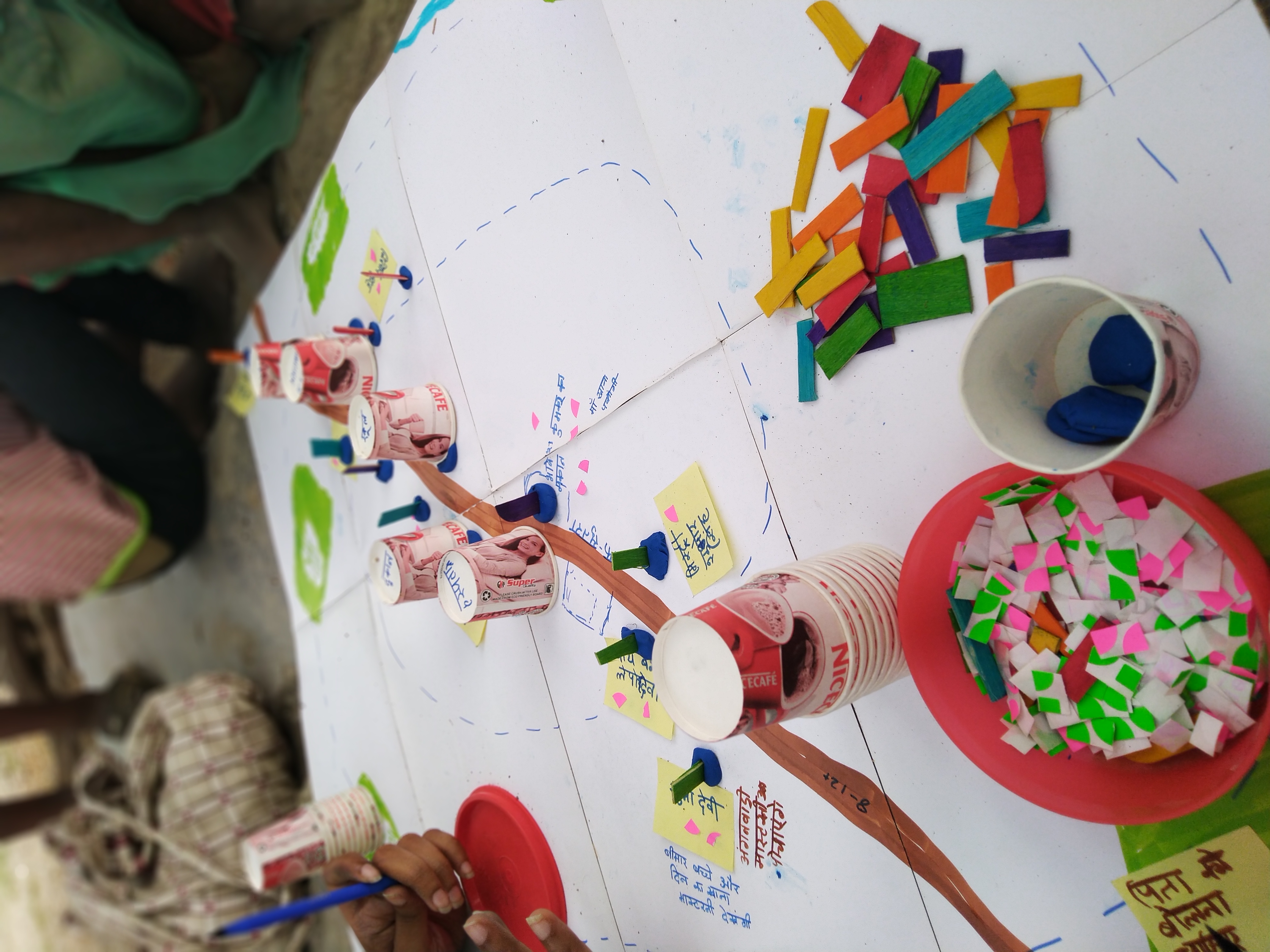Caste and Education Geospatially in Rural Bihar

A transdisciplinary research project in collaboration with Project Potential Trust, Kishanganj, delving into the impact of the caste system on education and societal structures in rural Bihar.
- Project Context
- Initial Mapping Activity
- Planning and carrying out activities with Local Researchers
- Speculating an Ideal Village
- Reflections
The caste system in India, deeply entrenched and multifaceted, continues to exert its influence on various aspects of society, particularly in rural settings where disparities are stark. In an endeavor to comprehend and address the complexities of caste dynamics, our team embarked on a participatory research project in rural Bihar. Through a series of activities and engagements, we delved into the nuances of caste-based power structures and their implications on education, community life, and infrastructure.
Project Context
Our research journey commenced with a deliberate choice of location – Bhutijhari, a village emblematic of the intricate interplay between caste and community life. Consulting with members of Project Potential Trust, our collaborating organization, we recognized the diversity within and around Bhutijhari, including the neighboring Adivasi settlement of Bhelatupi. These contrasting locales provided fertile ground for exploring the manifestations of caste in village life and educational institutions.
Initial Mapping Activity
Using a map as a catalyst, we facilitated structured discussions with members of Project Potential and local researchers. Through these conversations, participants shared their biases, observations, and personal experiences related to caste. The stark contrast between the caste-based delineation of Bhutiihari and the mixed clusters of houses in Bhelatupi underscored the intricate nature of caste dynamics within rural settings.
Planning and carrying out activities with Local Researchers
Recognizing the invaluable contributions of local researchers, predominantly youth volunteers from Project Potential Trust, we emphasized the importance of team building. Equipping them with basic design-thinking tools, we fostered collaboration and mutual understanding. Through a series of team-building activities, we not only broke the ice but also gained insights into each other’s perspectives, laying a solid foundation for collaborative research endeavors.
Acknowledging the continuity of engagement beyond the research project, we involved local researchers as facilitators in participatory frameworks. One such activity, “Mummy kya Bolengi? kya Bolenge?”, facilitated by the researchers, aimed to understand the transmission of beliefs and values from parents to children. Through storytelling and role-playing, we spoke about deep-seated myths, metaphors, and beliefs, shedding light on the perpetuation of caste ideologies across generations.
Speculating an Ideal Village
Engaging adults in envisioning an ideal village, we prompted discussions on essential infrastructure and community dynamics. Participants were encouraged to place settlements on a hand-drawn map, with indicators of occupation hinting at caste affiliations. Through this activity, conducted in both Bhutijhari and Bhelatupi, we gleaned insights into community aspirations, socio-economic realities, and the subtle yet pervasive influence of caste on village life. Through participatory activities with adults and children, the team encouraged envisioning an ideal village while considering caste dynamics. Participants were prompted to place settlements and infrastructure based on the nature of occupations, revealing divergent perceptions and priorities across communities.
Reflections
This research project contributes to existing literature on caste and education by providing a tangible exploration of caste-based obstacles to quality of life. By employing participatory methods, the project facilitated meaningful conversations and uncovered insights often overlooked in academic discourse. The project’s emphasis on translating complex concepts into tangible experiences underscores the importance of inclusive and empathetic research practices. In summary, our research project offered a glimpse into the intricate web of caste dynamics in rural Bihar. By employing participatory methods, we transcended academic discourse to engage with the lived experiences and aspirations of communities on the ground. Our findings underscore the urgent need for holistic approaches to address caste-based inequalities and pave the way for a more equitable and inclusive society. Through continued collaboration and dialogue, we strive to effect meaningful change and empower marginalized communities in their pursuit of social justice and dignity.
